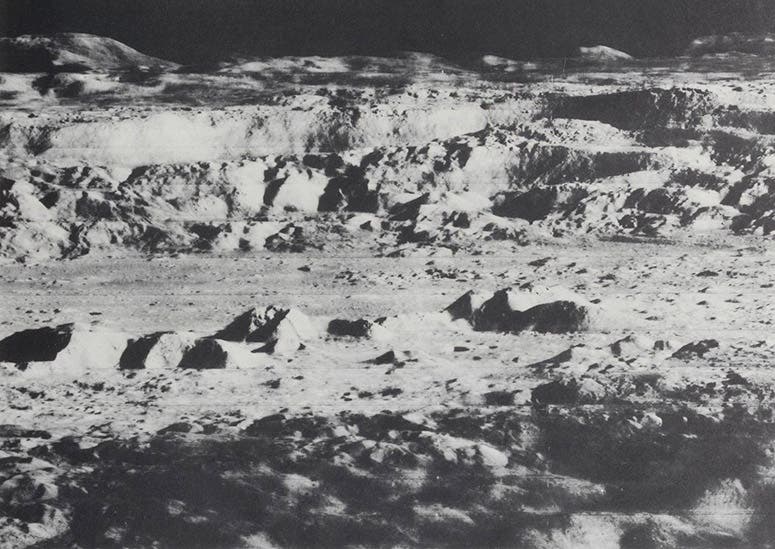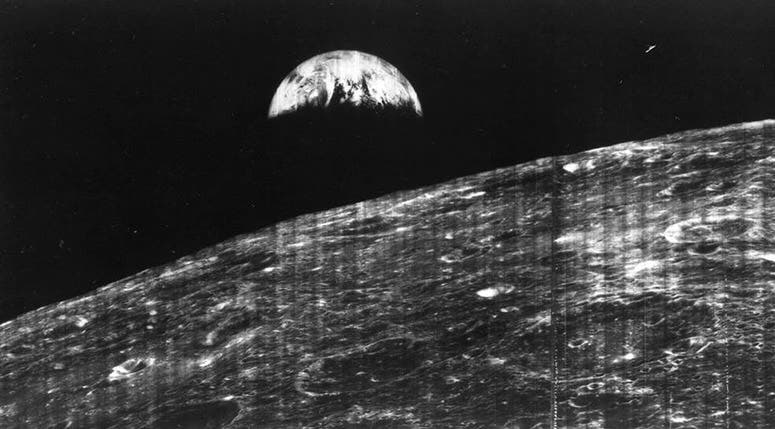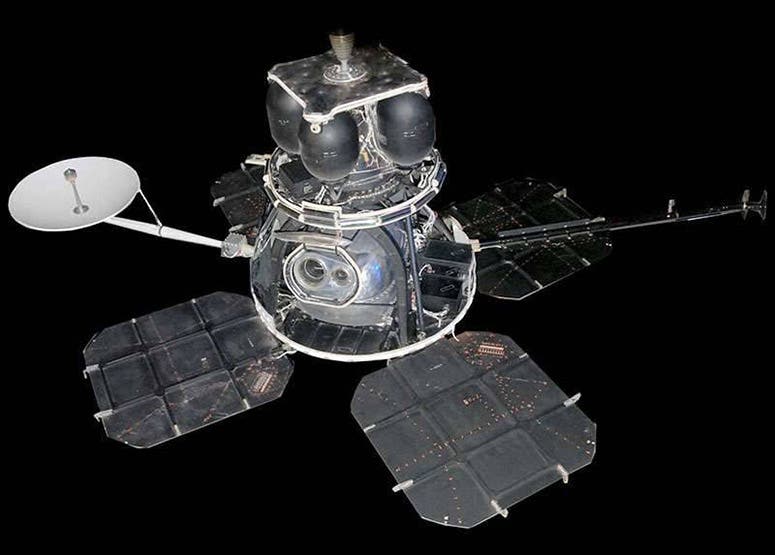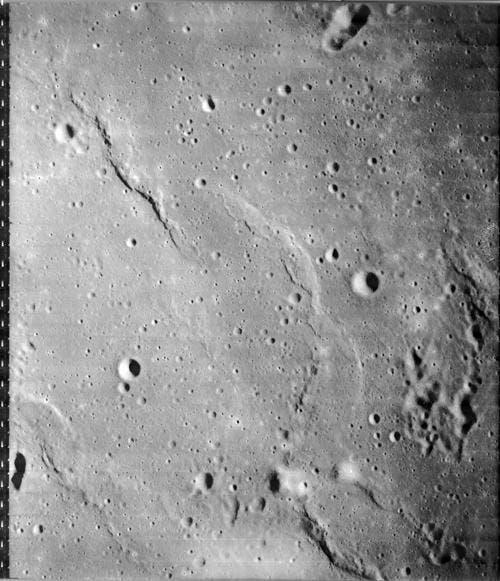Scientist of the Day - Lunar Orbiter 1
Lunar Orbiter 1, an American spacecraft, was launched toward the Moon on Aug. 10, 1966, aboard an Atlas-Agena D rocket. Lunar Orbiter 1 was basically a camera, with a radio dish and a small maneuvering rocket. The mission was to orbit the moon and take medium and high-resolution photographs of the lunar surface, focusing on areas being considered for the upcoming Apollo missions. It was also a beta platform for the camera system, in preparation for the four other Lunar Orbiter missions that would follow in 1966 and 1967.
The most unusual feature of the Lunar Orbiter 1 spacecraft is that it did not use a television camera, but rather a real film camera made by Eastman Kodak. The film was on a long strip that was advanced and exposed over 10 days in 205 frames. The strip was then developed, dried, and sent through a reader and scanned by a photoelectric system, producing very thin electronic "framelets" (see diagrams, third and fourth images). The scanner readout was then transmitted back to deep-space stations on Earth, and the framelets were reconstructed into the original frames. On many of the photos from the Lunar Orbiters, you can see bands – those are the edges of the framelets.

Diagram of the film exposure and scanning system on Lunar Orbiter 1 (above) as well as a diagram of just the photoelectric scanner that produced the “framelets” (below), from The Moon as Viewed by Lunar Orbiter, by L.J. Kosofsky and Farouk El-Baz, NASA SP-200, 1970 (Linda Hall Library)
Most of the 205 frames are not dramatic, and they were not supposed to be. NASA wanted to send the Apollo landers – at least the early ones – to flat, unspectacular areas, unblemished by large craters. We show one of those here (fifth image). It provides details that you could never see from Earth with even the most powerful telescope. This is why the Lunar Orbiter missions were flown.
Probably the most spectacular photo taken by Lunar Orbiter 1 was recorded on Aug. 23, 1966, for it showed not only the impressive central peak of the crater Tsiolkovsky, which is on the far side of the Moon and can never be seen from Earth, but also the Earth in the distance, just above the Moon's far limb (sixth image). A detail of that image was released to the press and became very popular, and properly so, as it was the first image of the Earth ever taken from lunar orbit (first image). Much, much later, the image was reprocessed, and a handsome, cleaner image was released. You can see it here. But as a historian, I like the original photo much better.
Lunar Orbiter 1 was deemed a success, even though its mission was shortened as it ran out of fuel and had to be crashed into the lunar surface (on the far side) in October. But the scanning system worked, and Lunar Orbiters 2, 3, 4, and 5 did even better, mapping the entire near side and some of the far side. In 1970, NASA issued Special Publication no. 200, The Moon as Viewed by Lunar Orbiter, with selected highlight photographs from all the Lunar Orbiter missions. We show several of these here, extracted from that publication (our diagrams of the camera system came from the same source).

An oblique view of the crater Copernicus, photograph by Lunar Orbiter 2, from The Moon as Viewed by Lunar Orbiter, by L.J. Kosofsky and Farouk El-Baz, NASA SP-200, 1970 (Linda Hall Library)
One shows the crater Copernicus, taken from a very oblique angle, made possible because the Orbiters came as close as 25 miles from the lunar surface on each orbit, before retreating to 1150 miles and then swooping back in for another frame (seventh image).

An oblique view of the craters Messier and Messier A, in Mare Fecunditatis, photograph by Lunar Orbiter 5, from The Moon as Viewed by Lunar Orbiter 2, by L.J. Kosofsky and Farouk El-Baz, NASA SP-200, 1970 (Linda Hall Library)
Another photo captured the twin craters Messier and Messier A, in the Sea of Fecundity, taken by Orbiter 5 (eighth image); we liked this one so much we displayed it in our exhibition, The Face of the Moon, Galileo to Apollo, way back in 1989.

The dark floor of the crater Plato, photograph by Lunar Orbiter 2, from The Moon as Viewed by Lunar Orbiter, by L.J. Kosofsky and Farouk El-Baz, NASA SP-200, 1970 (Linda Hall Library)
The final photo here just looks straight down, showing the dark floor of the crater Plato, which you can do with your own backyard telescope, but it doesn’t look quite like this (ninth image).
The Linda Hall Library happens to be a government document repository, so we have all of the NASA Special Publications in our documents collection, which is very useful if you are working on one of the NASA missions of the 60s, such as the Lunar Orbiter program.
William B. Ashworth, Jr., Consultant for the History of Science, Linda Hall Library and Associate Professor emeritus, Department of History, University of Missouri-Kansas City. Comments or corrections are welcome; please direct to ashworthw@umkc.edu.










